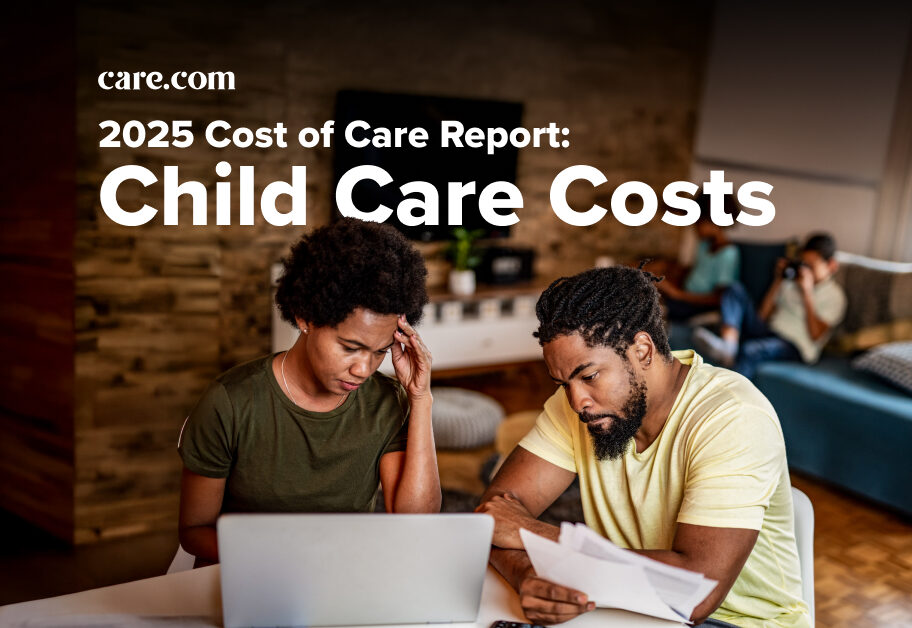In this article
It’s no secret that in-home care for seniors generally isn’t cheap. However, depending on factors like insurance coverage, location and the level of care required, in some cases, it may wind up being more affordable than long-term care facilities.
The cost of private home care can vary immensely depending on circumstance, and most people don’t commit to a home care financial plan, according to personal finance expert Laura Adams. “Few people are really prepared for their own financial emergencies, much less for that of a relative or aging parent,” she says. “But there are ways to work it into your goals.”
Here, Adams and other experts share all the details on the average cost of in-home care.
Key takeaways
- The cost of in-home senior care is wide-ranging and highly dependent on a number of factors, including care needs and location.
- In-home caregivers in top cities are posting hourly rates ranging from around $18-$29 on Care.com.
- In-home care for older adults can be expensive, but some federal programs, such as Medicare and veteran benefits, can help foot the bill.
Cost of in-home care
Home care is a broad spectrum. A senior relative may need occasional help cooking or toileting, or they may need 24/7 care with complex medical services. Typically, the higher the need, the more home care will cost.
The level of care will determine whether or not a family chooses to hire help, how often they use that help and the type of professionals they need, says C. Grace Whiting, the president of The National Alliance for Caregiving. A senior might be looking for someone with homemaking experience and a sunny personality or they may need an aide with a nursing degree and specific dementia training.
It’s also important to consider the type of care they will need. Is it medical or non-medical, which involves more companionship and grooming?
Here are some examples of the average asking rates posted by private home care workers, based on location, according to recent Care data.
Current posted in-home care cost in top U.S. cities*
| City, State | Hourly In-Home Care Rate |
|---|---|
| Atlanta, Georgia | $19.73/hr |
| Brooklyn, New York | $23.09/hr |
| Charlotte, North Carolina | $20.44/hr |
| Chicago, Illinois | $21.85/hr |
| Denver, Colorado | $24.73/hr |
| Houston, Texas | $18.85/hr |
| Orlando, Florida | $20.18/hr |
| Philadelphia, Pennsylvania | $20.97/hr |
| Phoenix, Arizona | $23.51/hr |
| Portland, Oregon | $24.58/hr |
| San Antonio, Texas | $18.555/hr |
| San Diego, California | $24.68/hr |
| San Francisco, California | $27.79/hr |
| Seattle, Washington | $29.31/hr |
| Tampa, Florida | $19.07/hr |
| Washington, DC | $23.21/hr |
Quick tips to help determine in-home senior care cost
- If possible, have a conversation with the senior about their needs. Respect their wishes.
- Write down all the tasks that must be performed on behalf of the senior, including grooming, bill paying, assistance getting up and down stairs or administering pills. Try not to leave any stone unturned since even small chores can have financial or legal consequences.
- Calculate how much time during the day the senior will require assistance.
“Few people are really prepared for their own financial emergencies, much less for that of a relative or aging parent. But there are ways to work it into your goals.”
— Laura Adams, personal finance expert
What factors into the cost of in-home care for seniors
Geographic area
Your location plays one of the biggest roles in how much you’ll pay for a caregiver. Hourly costs are typically higher in areas with greater costs of living, and areas with significant competition for senior caregivers can also push up costs.
To get a sense of how geography can influence cost, check out the Care.com Cost of Care calculator for examples of average asking pay rates by location.
Types of duties and tasks
Caregiving prices also vary based on what level of assistance the senior needs. “Duties that require higher caregiver pay are any types of care that need a higher level of skill or more dedicated, hands-on care, such as when caring for someone who is bedridden or recovering from a major surgery,” says Julie Northcutt, who formerly owned and operated a home care agency.
You may pay more if you need someone who:
- Has training to administer medication.
- Does household tasks such as cleaning, cooking and laundry.
- Transports the senior.
- Performs certain hygiene tasks such as bathing.
- Handle medical tasks such as wound care.
Before you hire a caregiver, it’s important to explicitly cover what tasks are and aren’t included in their price so there are no surprises on either end.
Experience and specialization of the caregiver
Senior caregivers with years of experience and specialization can command higher prices than caregivers with less time under their belt. Those who have earned certifications or completed relevant training or licensing may also charge more. For example, a CNA will charge more than a caregiver with no medical training.
While most states require professional in-home caregivers to have at least some basic training and certification, Northcutt says, some require more in-depth and ongoing training — especially if the caregiver has a specialty.
“Some states, such as Illinois, require any caregiver who will care for someone with Alzheimer’s disease and dementia to complete an initial six-hour training course on memory loss care, along with a three-hour renewal training course each year,” Northcutt explains. “This demonstrates how important it is to have a caregiver who has experience in caring for the health conditions the senior may be experiencing.”
She notes that while some caregivers do general work, most will specialize, especially as they advance in their career. “Just as it doesn’t work to hire a painter to do your plumbing, caregivers are professionals too, and they have specific training and work experience,” Northcutt adds. “Certain caregivers, for instance, enjoy end-of-life care and have been trained to be hospice caregivers, and others may specialize in caring for someone recovering from a stroke.”
Type of employment
Caregiver asking rates can also vary depending on whether the caregiver works independently or is employed by an agency. Both have their benefits and drawbacks; agencies usually charge higher fees than the individuals, but they also vet caregivers and ensure minimum qualifications are met.
Northcutt says licensed senior home care agencies have to charge more due to additional overhead, such as worker’s compensation insurance, liability insurance, a fidelity bond and payroll taxes. “Seniors who have accumulated a lifetime of assets must remember that caregivers are employees, and they will want to maintain all the protections necessary for employee injuries,” Northcutt explains. “Many families realize that having these protections are more than worth the extra few dollars per hour.”
If you hire a caregiver directly, Northcutt recommends looking into offering some of these protections yourself, which add to the up-front cost but can protect your finances if your caregiver is hurt on the job and sues.
Cost of in-home home care vs. nursing homes
The cost of in-home care depends greatly on need. The median annual cost of a 24/7 home health aide was $288,288 in 2023, according to the most recent Genworth Cost of Care Survey. By comparison, the national annual median cost of 24/7 nursing home care is $104,025 a year for a semi-private room and $116,800 for a private one, according to Genworth. This price tag includes basic daily living costs including food, housing and medical supplies in addition to round-the-clock access to skilled nurses and aides.
Payment options for private home care
Research federal benefits
When considering how you’ll foot the bill for home care, you might want to explore potential federal benefits.
Medicare
The federal program provides some coverage for short-term, acute care, says Whiting. It also provides certain medical supplies if they are deemed necessary by a doctor.
Medicaid
This coverage is broader, but it varies widely state by state. For example, many states, including New York and Iowa offer Programs of All-Inclusive Care for the Elderly (PACE) or consumer-directed care riders, wherein Medicaid covers wages for home health aides. These programs may also provide a stipend for family members or friends who are caregivers.
State assistance programs
Most states also have some version of an assistance program that doesn’t require Medicaid, such as the Attendant Care Program in Maryland or the Respite for Elders Living In Everyday Families (RELIEF) program in Florida. Eligibility and program features vary widely.
If you’re looking for localized information, CeCelia Snide, a home aide in Vermont for 25 years, strongly recommends word-of-mouth. “If you go online, there are groups for everything,” she says. “Ask questions. Nine times out of 10, someone you know has gone through the same thing.”
Veteran benefits
If the senior is a veteran, they may be entitled to a completely different set of home health benefits from the VA, including free visits from home health aides.
Quick tips for navigating in-home care benefits
- Find out which supplies and providers are covered by Medicare.
- Find out if a senior is eligible for Medicaid in their state. Study the state’s specific coverage, and be on the lookout for waiver programs, such as PACE or a consumer self-directed program.
- Head to Benefits.gov and input the senior’s information to find localized benefits options.
- If an older adult is a veteran, find out if they’re eligible for VA caregiving assistance.
- Every state has a department that oversees eldercare. Paying For Senior Care can help you find localized options for federal benefits, including non-Medicaid programs.
- Lean on local support. Senior-based agencies, such as Area Agencies on Aging (AAA) may be able to help families navigate the benefits system.
Consider private insurance options
If you’re not eligible for federal benefits or if you need broader coverage than your state allows, private insurance could be a way to fill the gaps. Policies vary widely, however, so it’s important to know your options before you buy, and it’s important to plan early.
Long-term care insurance
Long-term care insurance, which usually covers all types of home care, is another option for a senior who requires extensive care. But it bears noting that it’s not cheap, according to Adams. “It’s expensive, but when you compare it to what you have to pay out of pocket for around-the-clock care, long-term care insurance can definitely make sense,” she notes.
Some stats from the American Association for Long-Term Care Insurance (AALTCI):
- The average 55-year-old couple spent anywhere between $2,080 to $8,575 in annual premiums on this type of insurance in 2022.
- Single 65-year-old women spent between $2,700 to $7,225.
- Single 65-year-old men paid $1,700 to $4,200.
Private health or life insurance
If an older loved one has private health or life insurance, their policies may offer home care coverage that isn’t covered by Medicare or Medicaid. Sometimes, private companies offer special products for retired federal workers, teachers or hospital employees.
Additionally, older adults can buy insurance products, while a proxy with financial Power of Attorney may be able to change or choose insurance plans on their behalf.
Private health insurance plans may also cover prescription and home care supply costs, says Snide. However when it comes to aides, these plans typically only cover short-term, acute, at-home needs only.
You can work with your insurance agent to find a policy that offers different, individualized long-term care benefits, like tax-free advances on death benefits or funds that pay out to a policyholder who is terminally ill.
A combination permanent life/long-term care insurance policy
Unlike long-term care insurance, these policies are guaranteed to be put to use: You can use the policy’s large death benefit payout, or you can use the long-term care funds, which would decrease the death benefit.
According to the AALTCI:
- If you pay all at once, the average cost of a policy is $75,000 for a single person.
- A leading insurance company with a $100,000 insurance policy would offer a monthly long-term care benefit of $8,079 or a death benefit of $193,906.
This can all be a lot to navigate, which is why Adams suggests researching extensively before buying a policy. “Get in touch with different brokers who specialize in health and life insurance. Do your homework. Get multiple quotes,” says Adams.
Look for a broker who has a Certification for Long-Term Care (CLTC) and has therefore undergone specific long-term care training.
Quick tips for covering in-home senior care costs
- Find out if an aging adult has private medical insurance or any life insurance policies. Review all terms pertaining to caregiving.
- Review additional insurance policy and product options. Individual insurance companies usually offer quote calculators on their websites. These websites will also refer you to life insurance agents in your area.
- Find a reliable life insurance broker by consulting trusted advisers in your life, such as your CPA, your financial planner or lawyer. Try multiple brokers before landing on a policy.
- Ask trusted family members and friends what they’re doing about private insurance vis-a-vis caregiving.
Review personal assets
Unfortunately, many caregivers are forced to use their own or their aging loved one’s personal assets to pay for home care. The reason: “A lot of people are not prepared, and they have not purchased insurance,” says Adams. “They find themselves in a situation where they need to find money immediately.”
That’s why, if possible, people with aging family members should consider saving money for the express purpose of long-term care at home, Adams says.
Without savings to fund long-term care, you might consider the following options:
Get an equity line of credit on your home
For a short-term cash infusion, you can basically take out a loan on your own home — with interest paid to a bank. You can also do this on your senior loved one’s home if you have POA.
Take out a personal bank loan
Caregivers can take out a personal bank loan to frontload expenses. Interest rates in 2024 ranged anywhere from 7.99% to 36%, Bankrate says, and it’s important to shop around through different lenders. Your rate will improve depending on your personal financial situation, including your credit score and annual income.
Take a loan from your retirement funds
One major no-no: Adams strongly opposes withdrawing money from your own retirement funds, such as 401Ks, since you will incur a 10% penalty if you are under 59 1/2 years old.
That said, you may be able to take a loan from your retirement funds — rather than withdraw — at a much more affordable interest rate. You can borrow up to 50% of your retirement account balance according to IRS guidelines, and you’ll only be in debt to yourself, interest included.
But retirement accounts should still be a last resort, Adams says.
“Regardless, tapping your retirement funds is never a good idea,” says Adams. “If you spend all your money on your aging parents, you’re going to be relying on loved ones to pay for you. It’s a downward spiral.”
“…Tapping your retirement funds is never a good idea. If you spend all your money on your aging parents, you’re going to be relying on loved ones to pay for you. It’s a downward spiral.”
— Laura Adams
Planning and budgeting for private home care
In order to get ahead of footing the bill for the cost of private home care, consider opening a high-yield savings account reserved for home care only. You might also assess all of your federal and private benefits options before you dip into personal assets.
Seniors and family caregivers should collectively review assets, including savings, equity and — if absolutely necessary — retirement accounts. And family members with the best credit and financial history may consider reviewing bank loan options.
In short, paying for in-home care for a senior can be a challenge. However, caregivers will be much more prepared if they arm themselves with research, thorough self-assessments and the right professionals.
Additional reporting by Emily Starbuck Gerson
For general informational purposes only: not a substitute for financial or legal advice from a licensed professional based on your particular circumstances.





